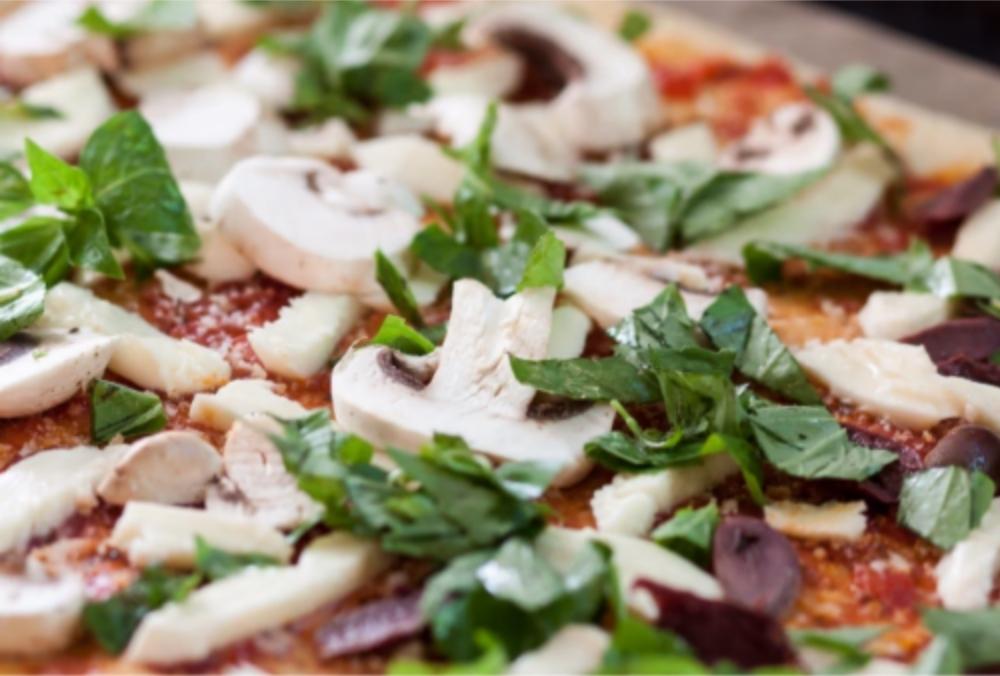Boussole
Wellness
Blog
Boussole Wellness
Blog
Let’s navigate the journey from burnout to blissful balance together!
Learn how I turned exhaustion into empowerment, and am now living a life full of energy and love.

The Key to Healthy Eating is Simpler Than You Think
Let’s talk about food.
We have to eat.
But somehow eating today has become something very complicated and hard to figure out.
Eat this.
Don’t eat that.
This will help you build muscle.
This will improve your microbiome.
Supplement with this to lose weight.
Supplement with this to improve brain health.
My grandparents would shake their heads if they saw some of the things found in grocery stores these days.
Chia seeds. Hemp seeds. Stevia. Gluten-free everything.
Figuring out what to eat can be a challenging task, especially when you’re trying to meal plan not just for yourself, but your entire family as well.
But it doesn’t have to be when you keep these simple principles in mind for nourishing your body (and the bodies of your loved ones too!):
Eat Whole Foods
Yes, in an ideal world, organically, ethically, sustainably, responsibly, and locally produced would be the best, as would raised without chemicals, antibiotics, or hormones, but that is often the least accessible and most expensive, so do what you can when you can.
So, what does that look like?
Eating more fruits and vegetables
Make your salad a rainbow of colour
Add fruit to your yogurt, oatmeal, cereal, salad, or snack
Add spinach or kale to soup, stews, or curries
Canned and frozen are good choices as well if you’re worried about produce going to waste
Limiting processed food
Most processed items have lost some of their fibre and nutrients but gained added sugars, artificial colours, sodium, stabilizers, and preservatives
When reading labels, look for items with the least amount of added ingredients—especially ones that you don’t recognize or can’t pronounce
Choosing whole grains over refined carbs
Whole grains provide more nutrients and more fibre and may reduce inflammation and help gut health
Refined carbs are highly processed foods that tend to be low in nutrients; examples include packaged cereals, white bread, white rice, pasta, cakes, biscuits, sweets, pastries, pies, white flour, beer, sweet white wine, and sherry
Substituting vegetables for refined carbs in recipes
Use cauliflower as a substitute for white rice, or try spaghetti squash instead of pasta
Meal Plan for the Week
Taking 30 minutes once a week to map out what you’re eating for dinner (and the groceries you need to make it happen) makes the rest of the week much less stressful.
There’s no need to plan every meal for every day, but look at your commitments (and those of your family) and figure out when you have time to cook, when you might need to pull something from the freezer, and when you’ll keep things simple by having soup and sandwiches for dinner.
Bring a List to the Grocery Store and Stick to the Perimeter
Processed foods are often found in the aisles, so become a savvy shopper and stick to the perimeter as much as possible. Follow the grocery list you made before leaving the house (because you created a meal plan and don’t want to waste food or money!).
Don’t be tempted by the items placed at the end of the aisle or near the checkout—they’re usually packaged convenience items that aren’t going to help you eat healthier.
Cook Your Own Meals as Often as Possible
Eating out is convenient and when you’re short on time, it might seem like the drive-thru is the easiest solution. But with a little planning beforehand, you can still eat healthy, even if it’s on the way to a soccer game or gymnastics practice.
Investing in glass containers and thermoses allows you to bring almost any meal with you. Instead of eating a greasy burger before your kid’s soccer game, you could be enjoying a hot thermos of vegetable curry. Yum!
Having pre-cut veggies on hand to eat while on the go is a much healthier option than a bag of chips. Fruit is another easy grab-and-go snack. Need some protein? Add some cheese, some nuts, or a hard-boiled egg.
Make Enough for Leftovers
One of the easiest ways to eat healthy is making enough so you can eat it for lunch or dinner the next day. You can also freeze meals so that on busier days when you don’t have time to cook, you can pull something out of the freezer in the morning. Having glass containers to keep extra meals in the fridge and freezer makes eating healthy so much easier on those busy days—no cooking required!
Try New Foods
You might be surprised to find a new cuisine that you love. Many cuisines, such as Mexican, Italian, Indian, and Ethiopian are predominantly plant-based, making healthy choices even easier. Something we like to do is to pick a cuisine (Thai, for example) and we’ll each choose a couple of recipes to make over the next month. We have discovered some favourite meals this way—I dare you to give it a shot!
Eat Without Distractions (no TV, phone, etc.)
Eating without distractions, especially when eating with others, should be a no-brainer. When you’re distracted, you tend to eat faster and consume more than your body needs. When you take the time to enjoy the meal that has been prepared, you savour your food, you heed your body’s satiety cues, and you appreciate the people you’re eating with more.
Be Mindful When Eating and Use Your Senses
By paying close attention to how you feel as you eat, you can promote better digestion, keep full with less food, and make healthier choices about what you eat in the future. Using your five senses gets you to really pay attention to what you’re eating and how it makes you feel. Here are some prompts to keep in mind:
What does your food smell like as it’s cooking and once it’s been served?
What does it sound like (especially as it’s cooking)? (Think about steak sizzling)
What does it look like? (Presentation makes a big difference; think about 5-star restaurants and how they plate an entrée)
What does your food feel like (its texture and temperature) once it’s in your mouth?
Finally, what does it taste like?
Create Rituals for Mealtime
When you do have time, rituals make meals something everyone looks forward to. There is no point in saving the ‘good’ plates only for special occasions. Use them when you can and savour the memories you’re making with your family. We love listening to music and lighting candles as part of our sit-down dinners.
Deepen Your Connection to the Earth
Making a greater connection to where your food comes from, how it’s produced, and the journey it’s taken to your plate helps you develop more gratitude for the food you’re eating. Involve your kids as much as you can so they too can learn where their food comes from. Some ideas to try:
Eating locally grown food (check out a farmers’ market!)
Nurturing a garden and growing your own food (we do this every year and the kids help us plant, weed, and harvest)
Learning about wild foods and herbs in your area
Practising mindfulness in nature (go for a walk in your area and really look at what is growing all around you—nature is a gift and we should be grateful for all that she has to offer)
It’s Important to Find What Works for YOU
We all have biochemical individuality: what works for your friend/sister/mother won’t necessarily work for you.
Think of your body as an experiment:
Slow down and be mindful of your eating
Journal what you eat, when you exercise, what you are doing, and how you are feeling
Listen to your body’s signals: symptoms, cravings, energy levels
Experiment with food to find a path that nourishes you and gives you energy
Some essentials I’ve learned over years of experimenting:
Eat the rainbow
Eat healthy, complex carbohydrates
Know how much fibre and protein you need every day to feel your best
Eat healthy fats:
Monounsaturated fats, like olive, avocado, and most nut oils
Polyunsaturated fats are essential fats (our body cannot produce them) and there are two main types, Omega 3 and Omega 6 fatty acids, found in salmon, mackerel, sardines, and walnuts
Eat lots of dark, leafy greens
Trust Yourself and Your Inner Wisdom
When you begin to listen to your own unique body, you will find what gives it energy, what stabilises your weight, and what creates lasting health.
You already know how to eat for your body. It’s time to trust yourself and listen to your own body’s cues.
Learning to listen to your body and discover what truly nourishes you is the key to healthy eating.
Nourishing your body is crucial if you want to feel and look the best you possibly can. It increases your energy so you can do the things you love. It lets you feel more comfortable in your own skin and helps you maintain a healthy weight. It also lowers your risk of disease and increases your longevity.
Nourishing your body is one of the fundamental pillars Burnout to Bliss supports women in achieving. Healthy eating is essential to your health and wellness—are you getting the nourishment you need? If you’re not (or not sure), I invite you to check out the program and how it can help guide you to living a life of bliss!

The Key to Healthy Eating is Simpler Than You Think
Let’s talk about food.
We have to eat.
But somehow eating today has become something very complicated and hard to figure out.
Eat this.
Don’t eat that.
This will help you build muscle.
This will improve your microbiome.
Supplement with this to lose weight.
Supplement with this to improve brain health.
My grandparents would shake their heads if they saw some of the things found in grocery stores these days.
Chia seeds. Hemp seeds. Stevia. Gluten-free everything.
Figuring out what to eat can be a challenging task, especially when you’re trying to meal plan not just for yourself, but your entire family as well.
But it doesn’t have to be when you keep these simple principles in mind for nourishing your body (and the bodies of your loved ones too!):
Eat Whole Foods
Yes, in an ideal world, organically, ethically, sustainably, responsibly, and locally produced would be the best, as would raised without chemicals, antibiotics, or hormones, but that is often the least accessible and most expensive, so do what you can when you can.
So, what does that look like?
Eating more fruits and vegetables
Make your salad a rainbow of colour
Add fruit to your yogurt, oatmeal, cereal, salad, or snack
Add spinach or kale to soup, stews, or curries
Canned and frozen are good choices as well if you’re worried about produce going to waste
Limiting processed food
Most processed items have lost some of their fibre and nutrients but gained added sugars, artificial colours, sodium, stabilizers, and preservatives
When reading labels, look for items with the least amount of added ingredients—especially ones that you don’t recognize or can’t pronounce
Choosing whole grains over refined carbs
Whole grains provide more nutrients and more fibre and may reduce inflammation and help gut health
Refined carbs are highly processed foods that tend to be low in nutrients; examples include packaged cereals, white bread, white rice, pasta, cakes, biscuits, sweets, pastries, pies, white flour, beer, sweet white wine, and sherry
Substituting vegetables for refined carbs in recipes
Use cauliflower as a substitute for white rice, or try spaghetti squash instead of pasta
Meal Plan for the Week
Taking 30 minutes once a week to map out what you’re eating for dinner (and the groceries you need to make it happen) makes the rest of the week much less stressful.
There’s no need to plan every meal for every day, but look at your commitments (and those of your family) and figure out when you have time to cook, when you might need to pull something from the freezer, and when you’ll keep things simple by having soup and sandwiches for dinner.
Bring a List to the Grocery Store and Stick to the Perimeter
Processed foods are often found in the aisles, so become a savvy shopper and stick to the perimeter as much as possible. Follow the grocery list you made before leaving the house (because you created a meal plan and don’t want to waste food or money!).
Don’t be tempted by the items placed at the end of the aisle or near the checkout—they’re usually packaged convenience items that aren’t going to help you eat healthier.
Cook Your Own Meals as Often as Possible
Eating out is convenient and when you’re short on time, it might seem like the drive-thru is the easiest solution. But with a little planning beforehand, you can still eat healthy, even if it’s on the way to a soccer game or gymnastics practice.
Investing in glass containers and thermoses allows you to bring almost any meal with you. Instead of eating a greasy burger before your kid’s soccer game, you could be enjoying a hot thermos of vegetable curry. Yum!
Having pre-cut veggies on hand to eat while on the go is a much healthier option than a bag of chips. Fruit is another easy grab-and-go snack. Need some protein? Add some cheese, some nuts, or a hard-boiled egg.
Make Enough for Leftovers
One of the easiest ways to eat healthy is making enough so you can eat it for lunch or dinner the next day. You can also freeze meals so that on busier days when you don’t have time to cook, you can pull something out of the freezer in the morning. Having glass containers to keep extra meals in the fridge and freezer makes eating healthy so much easier on those busy days—no cooking required!
Try New Foods
You might be surprised to find a new cuisine that you love. Many cuisines, such as Mexican, Italian, Indian, and Ethiopian are predominantly plant-based, making healthy choices even easier. Something we like to do is to pick a cuisine (Thai, for example) and we’ll each choose a couple of recipes to make over the next month. We have discovered some favourite meals this way—I dare you to give it a shot!
Eat Without Distractions (no TV, phone, etc.)
Eating without distractions, especially when eating with others, should be a no-brainer. When you’re distracted, you tend to eat faster and consume more than your body needs. When you take the time to enjoy the meal that has been prepared, you savour your food, you heed your body’s satiety cues, and you appreciate the people you’re eating with more.
Be Mindful When Eating and Use Your Senses
By paying close attention to how you feel as you eat, you can promote better digestion, keep full with less food, and make healthier choices about what you eat in the future. Using your five senses gets you to really pay attention to what you’re eating and how it makes you feel. Here are some prompts to keep in mind:
What does your food smell like as it’s cooking and once it’s been served?
What does it sound like (especially as it’s cooking)? (Think about steak sizzling)
What does it look like? (Presentation makes a big difference; think about 5-star restaurants and how they plate an entrée)
What does your food feel like (its texture and temperature) once it’s in your mouth?
Finally, what does it taste like?
Create Rituals for Mealtime
When you do have time, rituals make meals something everyone looks forward to. There is no point in saving the ‘good’ plates only for special occasions. Use them when you can and savour the memories you’re making with your family. We love listening to music and lighting candles as part of our sit-down dinners.
Deepen Your Connection to the Earth
Making a greater connection to where your food comes from, how it’s produced, and the journey it’s taken to your plate helps you develop more gratitude for the food you’re eating. Involve your kids as much as you can so they too can learn where their food comes from. Some ideas to try:
Eating locally grown food (check out a farmers’ market!)
Nurturing a garden and growing your own food (we do this every year and the kids help us plant, weed, and harvest)
Learning about wild foods and herbs in your area
Practising mindfulness in nature (go for a walk in your area and really look at what is growing all around you—nature is a gift and we should be grateful for all that she has to offer)
It’s Important to Find What Works for YOU
We all have biochemical individuality: what works for your friend/sister/mother won’t necessarily work for you.
Think of your body as an experiment:
Slow down and be mindful of your eating
Journal what you eat, when you exercise, what you are doing, and how you are feeling
Listen to your body’s signals: symptoms, cravings, energy levels
Experiment with food to find a path that nourishes you and gives you energy
Some essentials I’ve learned over years of experimenting:
Eat the rainbow
Eat healthy, complex carbohydrates
Know how much fibre and protein you need every day to feel your best
Eat healthy fats:
Monounsaturated fats, like olive, avocado, and most nut oils
Polyunsaturated fats are essential fats (our body cannot produce them) and there are two main types, Omega 3 and Omega 6 fatty acids, found in salmon, mackerel, sardines, and walnuts
Eat lots of dark, leafy greens
Trust Yourself and Your Inner Wisdom
When you begin to listen to your own unique body, you will find what gives it energy, what stabilises your weight, and what creates lasting health.
You already know how to eat for your body. It’s time to trust yourself and listen to your own body’s cues.
Learning to listen to your body and discover what truly nourishes you is the key to healthy eating.
Nourishing your body is crucial if you want to feel and look the best you possibly can. It increases your energy so you can do the things you love. It lets you feel more comfortable in your own skin and helps you maintain a healthy weight. It also lowers your risk of disease and increases your longevity.
Nourishing your body is one of the fundamental pillars Burnout to Bliss supports women in achieving. Healthy eating is essential to your health and wellness—are you getting the nourishment you need? If you’re not (or not sure), I invite you to check out the program and how it can help guide you to living a life of bliss!
“Keep good company, read good books, love good things, and cultivate soul and body as faithfully as you can.”
~ Louisa May Alcott
Connect
© Copyright 2024 Boussole Wellness Coaching | Helping women find more balance and feel more fulfilled!
Photography by Christina Louise Branding









